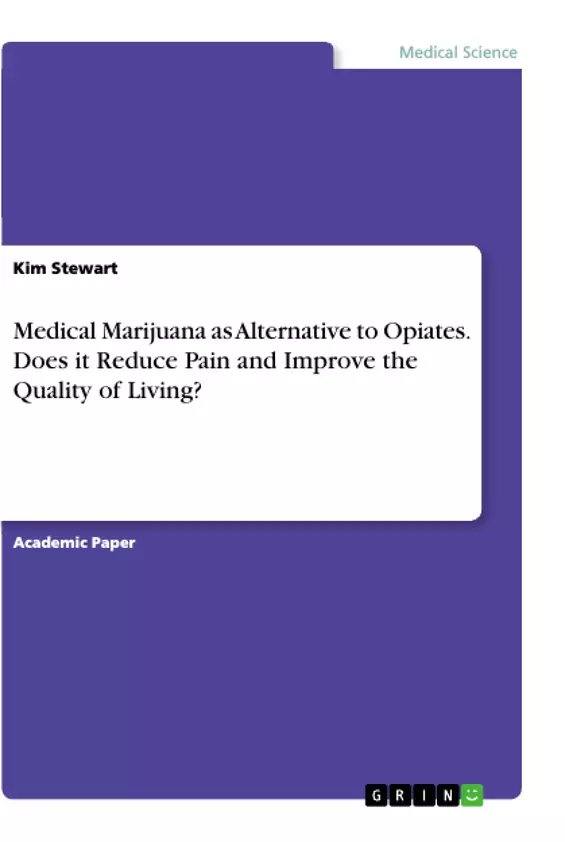Deaths due to opioid overdose continues to rise to the point that opioid use is now considered an epidemic. Since opioids are the common prescribed drug to treat chronic pain, there is a need to consider safer alternate treatments. This integrated literature review was conducted to examine if cannabis can effectively treat pain, improve quality of life, and reduce the need for opioids to manage chronic pain.
Nine studies were included in this review. All nine studies reported the effectiveness of cannabis in either pain management, decreased opioid use and/or improved quality of life. Because consideration of the medicinal uses of cannabis is new, eight of the nine studies included less than a one-year follow up. However, the results of the studies reveal that cannabis should be considered for more than recreational uses and that its medicinal uses date back for thousands of years. To fully understand all the benefits and potential side effects surrounding cannabis, further research is needed. For further research to be conclusive, it is necessary for regulatory barriers and campaigns to reduce stigmas surrounding cannabis to be at the forefront. Deaths related to opioid overdose is in upward of 4 million people worldwide, including prescribed and illegal use compared to the absence of deaths related to cannabis overdose, a powerful indicator that cannabis may be the solution to help the millions of persons who suffer from chronic pain.
Inhaltsverzeichnis (Table of Contents)
- Abstract
- The Effect of using Cannabis with or instead of Opioids on the Quality of Life in Patients Suffering with Chronic Pain
- Background and Significance
- Method
- Search Results
- Integrated Findings
- Themes
- Pain Management
- Opioid Reduction
- Quality of Life (sleep and social functioning)
- Limitations of Evidence
- Recommendations
- Conclusion
- Appendix A
Zielsetzung und Themenschwerpunkte (Objectives and Key Themes)
This literature review aims to evaluate the effectiveness of cannabis in treating chronic pain, improving quality of life, and reducing opioid use in patients with chronic pain. The review explores the potential of cannabis as an alternative treatment for chronic pain and investigates its impact on various aspects of patient well-being.
- The effectiveness of cannabis in managing chronic pain.
- The impact of cannabis on quality of life, including sleep quality and social functioning.
- The role of cannabis in reducing opioid use and dependence.
- The limitations of current research and the need for further investigations.
- The potential benefits and challenges associated with using cannabis as a medical treatment.
Zusammenfassung der Kapitel (Chapter Summaries)
The review begins by providing a comprehensive background on the prevalence of chronic pain and the current opioid crisis, highlighting the urgent need for alternative pain management strategies. It then delves into the history and medicinal uses of cannabis, emphasizing its long-standing tradition as a therapeutic agent. The review examines the findings of nine studies that investigated the effects of cannabis on pain, opioid use, and quality of life in patients with chronic pain. Each study is summarized, focusing on its methodology, key findings, and implications for future research.
Schlüsselwörter (Keywords)
This literature review focuses on the use of cannabis as a treatment for chronic pain, exploring its impact on pain management, quality of life, and opioid reduction. Key terms and concepts include: cannabis, medical marijuana, quality of life, pain management, chronic pain, sleep quality, and opioid reduction. The review also addresses the limitations of current research, highlighting the need for further studies and advocating for the removal of regulatory barriers and social stigmas surrounding cannabis.
- Citar trabajo
- Kim Stewart (Autor), 2018, Medical Marijuana as Alternative to Opiates. Does it Reduce Pain and Improve the Quality of Living?, Múnich, GRIN Verlag, https://www.grin.com/document/594788



